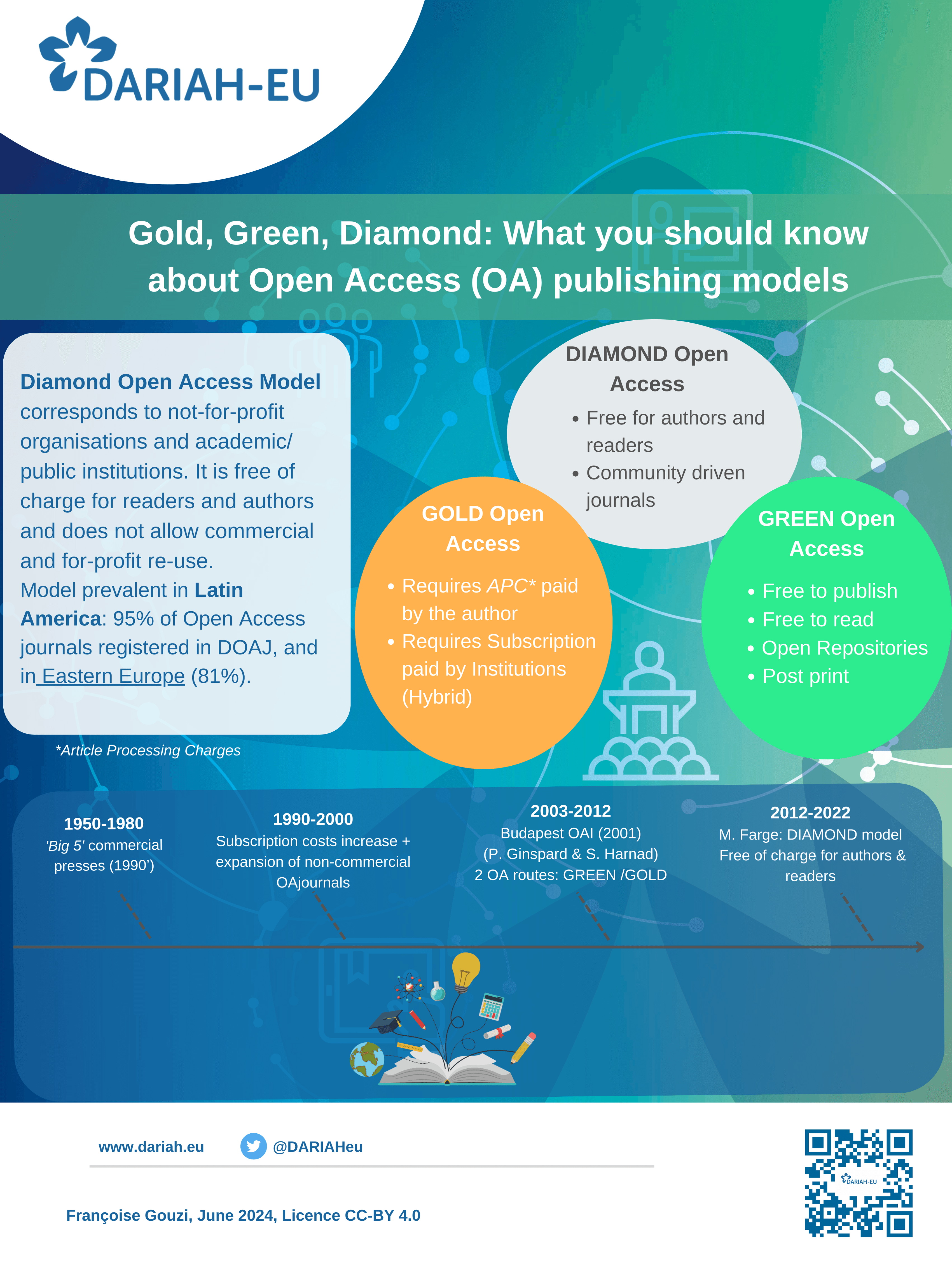Gold, Green, Diamond: What you should know about Open Access publishing models
- Authors
- Topics:
Learning outcomes:
With this presentation, researchers
- Discover the historical context of Open Access movement and milestones
- Recognise the different Open Access models
- Understand the terminology and concepts
- Discover and understand Open Access policies & strategies (international framework)
- Apply your skills: Open Access models’ Quiz
Introduction
Open Access movement is quite complex because it has many elements and criteria, so an historical approach may enable researchers understand better the origins and objectives of the movement. Then, progressing through the milestones and pioneers of Open Access will show you how is structured the scientific and politic movement.
At last, investigating the Open Access policy and strategy will give you keys to analise and decode Open Access framework from an international perspective.
Historical context
The large commercial publishers era (1950-1980)
Knowledge clubs and commons
Between 1950 and 1980, the new model of large commercial publishers came to dominate numerous fields of scientific publishing in Western countries.
The small society presses, struggling to cope with a growing scale, where supported and then largely supplanted the ‘Big 5’ commercial presses: Elsevier, Wiley, Springer, Taylor & Francis and Sage. These newly empowered players brought an industrial approach to the publication and dissemination process.
And we consider today that these commercial publishers represent 40% of global scientific publishing market and Elsevier is the first one of these publishers with 16% of the market.
The foundations of Open Access (1990-2000)
This period is characterised with two origins.
First one, the consequence of the unprecedented access afforded by online publishing and by Internet possibilities.
And the second one, the reaction against the large corporate model that has come to dominate scientific publishing and the hyperinflation of subscription prices!
Since 2000, some specialised free software for scientific publishing are appearing, like Open Journal Systems (OJS) which is developed by PKP. And these software enables significant expansion of non-commercial Open Access journals facilitating the creation and administration of journal websites.
During this period, many journals online are growing, as digital conversion of existing journals.
In addition, in the Directory of Access Journal (DOAJ) the total number of online journals (without APC - Article Processing Charges) have increased from 100 to 800.
The concept “Article Processing Charges” corresponds to fees that an institution or an author must pay to publish; it’s related to the Gold Open Access business model.
